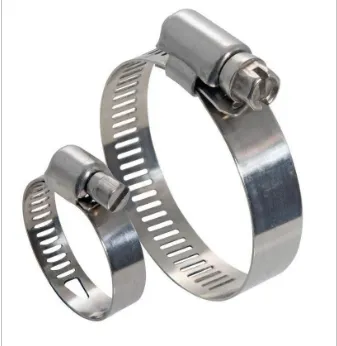
- Afrikaans
- Albanian
- Amharic
- Arabic
- Armenian
- Azerbaijani
- Basque
- Belarusian
- Bengali
- Bosnian
- Bulgarian
- Catalan
- Cebuano
- Corsican
- Croatian
- Czech
- Danish
- Dutch
- English
- Esperanto
- Estonian
- Finnish
- French
- Frisian
- Galician
- Georgian
- German
- Greek
- Gujarati
- haitian_creole
- hausa
- hawaiian
- Hebrew
- Hindi
- Miao
- Hungarian
- Icelandic
- igbo
- Indonesian
- irish
- Italian
- Japanese
- Javanese
- Kannada
- kazakh
- Khmer
- Rwandese
- Korean
- Kurdish
- Kyrgyz
- Lao
- Latin
- Latvian
- Lithuanian
- Luxembourgish
- Macedonian
- Malgashi
- Malay
- Malayalam
- Maltese
- Maori
- Marathi
- Mongolian
- Myanmar
- Nepali
- Norwegian
- Norwegian
- Occitan
- Pashto
- Persian
- Polish
- Portuguese
- Punjabi
- Romanian
- Russian
- Samoan
- scottish-gaelic
- Serbian
- Sesotho
- Shona
- Sindhi
- Sinhala
- Slovak
- Slovenian
- Somali
- Spanish
- Sundanese
- Swahili
- Swedish
- Tagalog
- Tajik
- Tamil
- Tatar
- Telugu
- Thai
- Turkish
- Turkmen
- Ukrainian
- Urdu
- Uighur
- Uzbek
- Vietnamese
- Welsh
- Bantu
- Yiddish
- Yoruba
- Zulu

دېكابىر . 03, 2024 16:22 Back to list
1% 201% 8% Fuel Supply Hose for Optimal Performance and Efficiency
The Essential Role of Fuel Filler Hoses in Automotive Design
In the dynamic world of automotive engineering, every component plays a crucial role in ensuring optimal functionality and safety. Among these components, the fuel filler hose emerges as an unsung hero, essential for the efficient delivery of fuel while also playing a significant role in reducing emissions. This article will explore the importance of fuel filler hoses, their design, maintenance, and the impact of innovations in this seemingly simple yet fundamental automotive component.
Understanding Fuel Filler Hoses
The fuel filler hose is a flexible pipe that connects the fuel tank to the fuel filler neck – the portion where drivers insert the fuel nozzle during refueling. Typically made from durable materials like rubber or specialized plastics, fuel filler hoses are designed to withstand a variety of conditions, including exposure to gasoline, extreme temperatures, and mechanical stress.
A well-functioning fuel filler hose is crucial for a vehicle’s performance. It facilitates the smooth transfer of fuel from the pump to the gas tank, ensuring quick refueling sessions that don't keep drivers waiting. Furthermore, its design must accommodate the unique shapes and orientations of different vehicle models, which can vary significantly across manufacturers.
Environmental Considerations
As vehicle emissions regulations tighten globally, the role of the fuel filler hose has expanded beyond mere functionality. Modern fuel filler hoses are engineered to minimize vapors that escape into the environment during refueling, contributing to the fight against air pollution. This is achieved through sophisticated sealing mechanisms and materials that prevent gasoline vapors from escaping, thus enhancing overall emission control systems within vehicles.
Fuel filler hoses are also designed to hold up against the corrosive properties of gasoline and other fuels. This durability not only extends the lifespan of the component itself but also ensures that harmful substances do not leak from the fuel system, safeguarding both vehicles and the environment.
1 1 8 fuel filler hose

Maintenance of Fuel Filler Hoses
Routine maintenance of fuel filler hoses is essential for vehicle owners. Over time, hoses can become brittle, cracked, or clogged due to fuel deposits or environmental factors. Signs of deterioration might include fuel smells near the filler neck, fuel leaks, or difficulty in refueling. Ignoring these warning signs can lead to more severe issues, not only auto-related but also concerning environmental safety.
Vehicle owners should regularly inspect their fuel filler hoses and replace them when signs of wear are evident. Keeping the hoses clean and free of oil or debris can also help maintain proper function. It’s advisable to have a professional check the fuel system during routine maintenance checks to ensure that all components, including the filler hose, are in excellent working condition.
Innovations in Fuel Filler Hose Technology
With advancements in automotive engineering, fuel filler hoses have also seen significant technological enhancements. The introduction of bio-compatible materials reflects the industry's shift towards sustainability. These materials not only reduce waste but also enhance the recyclability of vehicles.
Additionally, innovations in manufacturing techniques, such as the integration of sensors, are beginning to emerge. These sensors can monitor fuel levels and detect leaks, providing real-time data to vehicle owners and alerts for service when abnormalities occur. Such advancements highlight how even the simplest components can evolve to enhance vehicle safety and environmental responsibility.
Conclusion
Fuel filler hoses might not be the most glamorous components of a vehicle, yet their importance cannot be overstated. They are pivotal in ensuring efficient fuel transfer while simultaneously addressing environmental concerns through innovative design and materials. Understanding the role and maintenance of fuel filler hoses can empower vehicle owners to take proactive steps in their vehicle management, contributing to both their safety and the sustainability of our planet. As automotive technologies continue to advance, the humble fuel filler hose will undoubtedly continue to adapt, proving that even the smallest components can have a significant impact on the overall performance and safety of automobiles.
Latest News
Steel Wire Reinforced Hydraulic Hose SAE 100 R1 / EN853 1SN S
NewsOct.17,2024
Two Layers Steel Wire Reinforced Hydraulic Hose SAE 100 R2 / EN853 2SN
NewsSep.03,2024
Textile Braid Reinforced Hydraulic Hose SAE100 R3+R6
NewsSep.03,2024
Textile Reinforced Hydraulic oil Suction Hose with embedded Steel Wire SAE 100 R4
NewsSep.03,2024
Single Wire Braid and Textile Covered Hydraulic Hose SAE 100 R5
NewsSep.03,2024
High Pressure Thermoplastic Hydraulic Hose SAE 100 R7 / EN855 R7 - SAE 100 R8 / EN855 R8
NewsSep.03,2024
Heavy Duty Four-layer Steel Wire Spiral Reinforced Hydraulic Hose SAE100R9+R10+R12
NewsSep.03,2024
Heavy Duty Multi-layer Steel Wire Reinforced Hydraulic Hose SAE100R13 SAE100R15
NewsSep.03,2024
Latest Products










